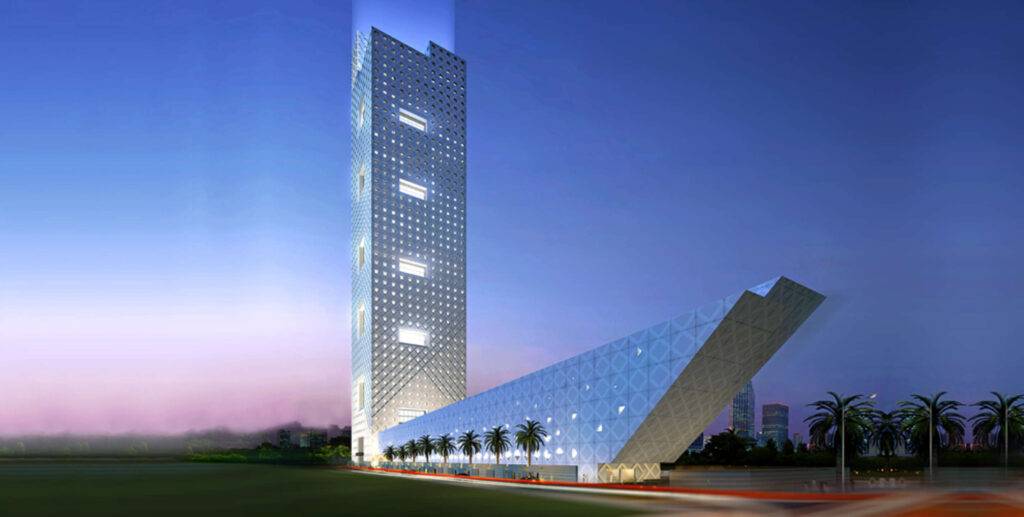Having proven his mettle by showing the ubiquitous presence of his talent around the globe, Raj Patel tends to fuse his architectural explorations with immaculate engineering and art to exhibit enthralling brilliance. A pioneer in the realm of architecture, he reflects upon the intersection of commercialism and architecture, challenges faced by architects today, the role of technology in the profession, the debate between a theoretical education versus a hands-on approach and his recent project of KIA headquarters (in Kuwait) as an exemplary work of building dynamic futuristic organization without losing connection to its past.
How did your adventure in realm of architecture begin?
I think I was about 8 years old and growing up in Toronto. My father’s friend was an Architect and he happened to take me to his office on one particular Saturday morning to pick up some work he wanted to bring home. There, I saw models of buildings that they had designed and I was instantly mesmerized. I knew then and there that I wanted to be an architect when I grow up. He gave me drafting paper, pencils, triangles and a T-square and I started drawing a building the very next day. Ever since, there has been no looking back and I have worked my way to come along this road of fulfilling my heart’s dream.
You have worked with leading design firms such as Skidmore Owings & Merrill, Perkins & Will and Charles Correa. You joined KEO International Consultants in 2001. How has all this work experience shaped the architect in you?
All the work experience is valuable, but I have been probably more fortunate than many people to have had these particular opportunities at various stages of my development. Working with Charles while I was still getting my Bachelor of Architecture degree gave me a glimpse of an intellectual man whose thoughts and ideas were larger than life. One feels like a little boy in his presence. He gave me a lot of confidence and encouraged me to pursue a Master’s degree. After my undergraduate degree, I worked at Perkins & Will in Chicago and got a taste for what corporate architecture was and how professional design organizations could be set up at a large scale. I worked there for two years and then pursued a Masters of Architecture degree. After graduate school, I went back to Chicago and worked for SOM where I learned that designing buildings throughout the world was definitely possible for me. I was able to mix the ‘spirit of architecture’ that I got from grad. school with the need to produce commercial buildings. It led to my joining KEO in 2001 with an abundance of experience and energy, ready to tackle a new world full of amazing challenges.
Recently you are working on KIA Headquarters supposed to be completed by the end of this year, which is one of the most attractive of your works. Would you tell us something about the building? Which are its chief features?
KIA is a design competition that we won while dealing with how to create a modern Headquarters building for a dynamic futuristic organization without losing its connection to its past. We searched for timeless architectural themes found in Kuwait’s history and tried to create a vision around them that would forge a design solution for the project. The main themes we found includes the courtyard, the Mashrabiya, and Islamic Geometry. We transformed these into a modern skyscraper with 8 story tall internal courtyards which office spaces wrap around. Islamic Geometry and the Mashrabiya inspired the creation of a three dimensional façade design that evoked a strong pattern while at the same time minimizing the amount of glass to protect the interior from the heat collected from the sun’s ultra violet rays.
KIA Headquarters building is sustainable in its approach. What can HQ building promote from that aspect, according to you?
Unfortunately, I think we tend to think of sustainability as energy related, but it also means how to do something peacefully for an extended period of time such as working in the same space day after day. It is proven that working in a healthy workplace environment leads to better performance, lesser rate of illness, and more positivity. We have designed the building using underfloor air distribution which requires less energy to cool the space with lower air velocity speeds as the air does not have to be forced from the ceiling downward. The recessed windows along the perimeter and the courtyard in the middle of every floor will provide a more ambient lighting level to the office floors reducing glare and allowing employees to be more productive. I think the feeling of working within courtyards will be a wonderful experience for all the employees subconsciously lifting their spirits by rekindling their connection to open spaces, nature, and other people.
How important is the place, the context for one of your buildings?
Context is very important when designing a building because you want to design something that feels like it belongs to that place and will remain meaningful even in the future. Sometimes, there is not much to be inspired from the context but there are subtle hints all around us that we can tap into, if we are receptive enough. While it is possible to build a glass skyscraper in the middle of the desert, I am not sure of its appropriate context.
What are the cornerstones of “architecture for green living”?
I think passive design strategies are incredibly important for architects to implement when designing for the built environment. Simplicity, efficiency, and functionality are also vital if the goal is promoting ‘green living’ and it is an architect’s responsibility to achieve this. On the other hand, Architecture for green living has its drawbacks it seems because people don’t always like the aesthetic outcome of employing passive design strategies and so the commitment to stay true to the principles is often abandoned. For example, the demand for glass buildings in extremely hot climates leads to high internal heat gains which must be offset by extra cooling loads. Not everyone; however, is willing to reduce the amount of glass on their building and so there is an impasse. I think our buildings in the future will look different as there is a gaining movement to minimize our use of natural resources and strive for zero energy buildings.
Have you abandoned or gone in hibernation while designing any project of yours? What are the challenges you face in the face of exponentially rising commercialism?
Yes, I find that being away from distractions definitely helps one focus on issues to be resolved in a particular project. Working early in the morning and working on the plane are probably the two best ways of concentrating on my work. Architecture is also about thinking and that is often a difficult thing to do in the chaos of the office with phones, emails, meetings, etc. Hibernation is a good thing! Commercialism is a necessary evil and I think one has to learn how to deal with it instead of condoning it. As architects, we cannot forget or deny that our projects carry a financial burden that must eventually be met in order to make the entire endeavor worth the effort. The biggest challenge that I find is that profitability of a project often leads to the use of cheap materials which are going to dilapidate within few years. When this happens, no one remember the constraints on the design and blames the architect for bad selection of materials.
The space we live in and perceive is expressed on different levels; how can today’s architecture be used to create new experiences of human cohabitation?
Perhaps the most intriguing building type of the past century is the modern skyscraper which allows us to cohabit above one another and experience views from extraordinary heights that were never imaginable in the past. To occupy a space hundreds of meters above the ground and look down upon the surroundings has shattered our being grounded to the earth and question our ultimate limitations to reach the sky above. Today’s architecture, as can be especially witnessed throughout Asian cities, has shifted from cohabiting along the horizontal plane to the vertical plane. It now seems the most important thing we will need in the future is a good elevator.
Ethics and aesthetics now seem to have come together in a sustainable vision of the dwelling-place. To what extent do you think construction materials can support a complex concept of design?
It’s a very good question but I am not sure that we are going in the right direction in this matter. While there are new advancements in technologies that are creating thinner, stronger, and weather resistant façade materials today, our profession is often trapped by people’s romantic notion of the past. When we are forced to create an arch today, it carries absolutely no meaning in terms of the construction methodology that the Romans invented using bricks or the structural ingenuity of transferring upper level loads to the ground while still being able to walk through an opening. In short, it is fake and that is disturbing to me. How can we demand advancements in our mode of transport from horse carriage to Bentleys but halt our advancement in our mode of construction technology? It seems the modern skyscraper is the only building type which requires us to employ materials made from new technology in order to work.
You have worked on a lot of places in your career. How have the demands and designing changed in recent years?
A lot has changed over the years- ‘process’ seems to be a word that no one understand or care about these days. Time and technology have overtaken ‘process’ in terms of importance. While I do understand that technological advances and programs allow us to generate drawings faster than ever, I do not think abandoning the ‘process’ is a good thing and it is our responsibility as designers to convince clients why it is important. As the saying goes- nine months and one woman can give you a baby, but one month and nine women can’t! It is hard to stay true to what you believe in today’s age of instant gratification but patience in this profession is worth enduring if you want to create something meaningful.
A piece of advice you will like to share with our young design aspirants?
Welcome to one of the most profound and rewarding professions that plays such an important part of how society experiences the built environment. I have learnt two very important lessons throughout the years- first, if you do not learn how to tear down your design ideas, someone else will! Learn to be critical and question what you are doing again and again as it is the only way to weed out the things that are weak and foster the things that are strong. Second, we design buildings for our clients, not ourselves. I see too many designers that walk away in disgust when a client does not like a design that they have proposed. The trick in this profession is to get a client to believe that the design you are proposing was actually his idea to begin with. If he does, you will get your project approved and most likely built. We must promote good design as architects and designers so I encourage you to find a mentor to help you navigate the stormy seas and stay on the right course. Work hard and you will be rewarded with good work!

